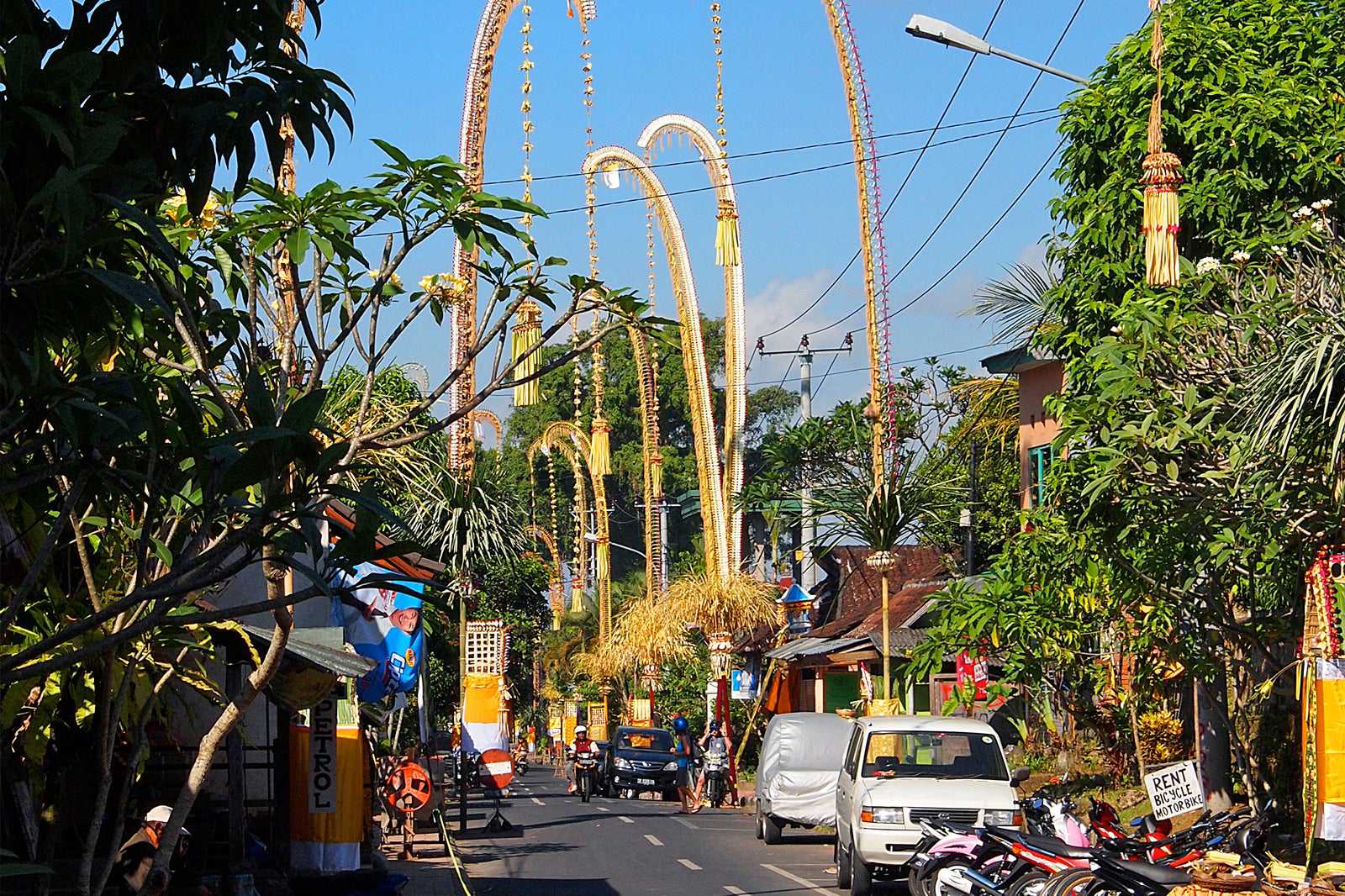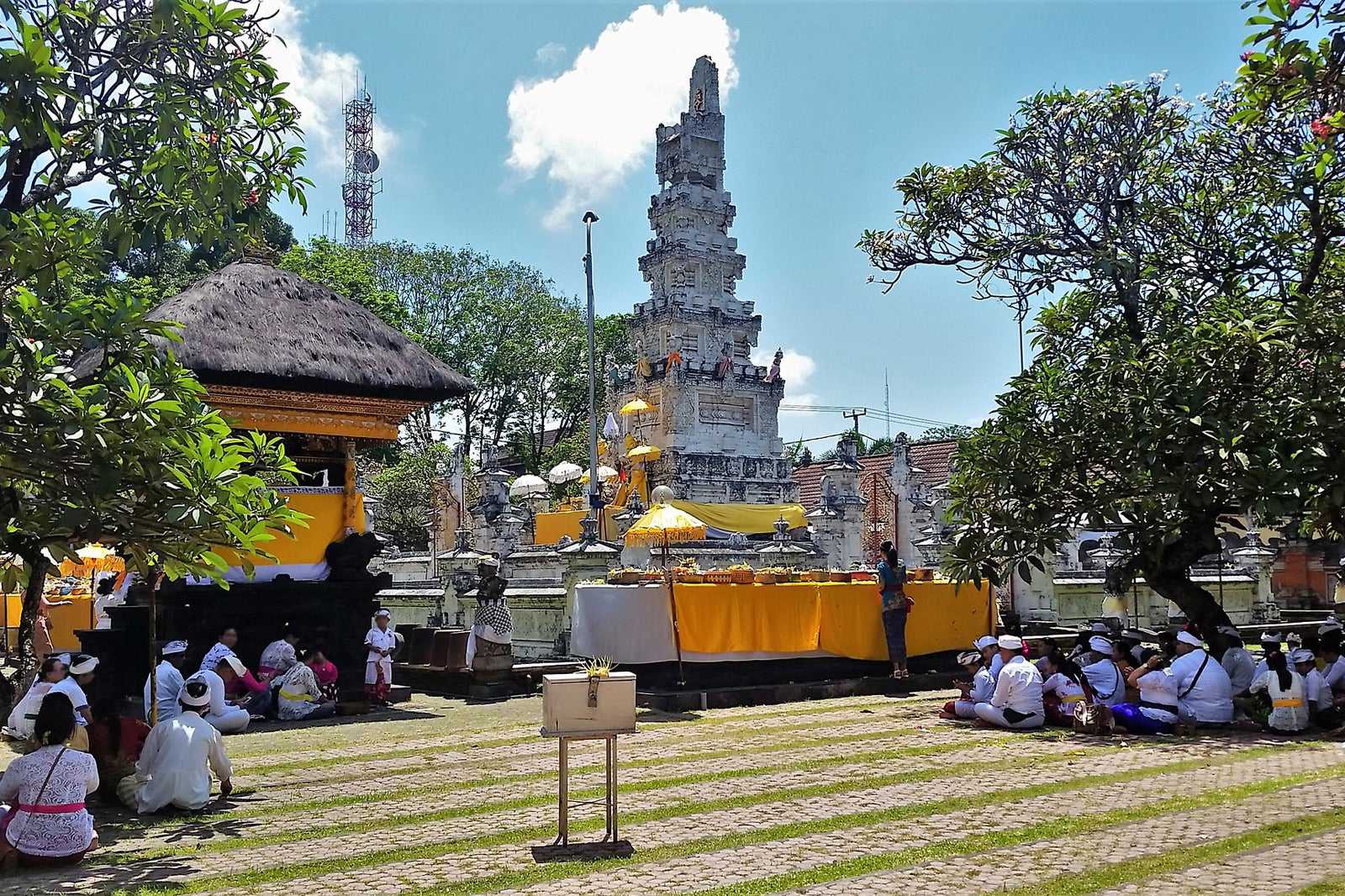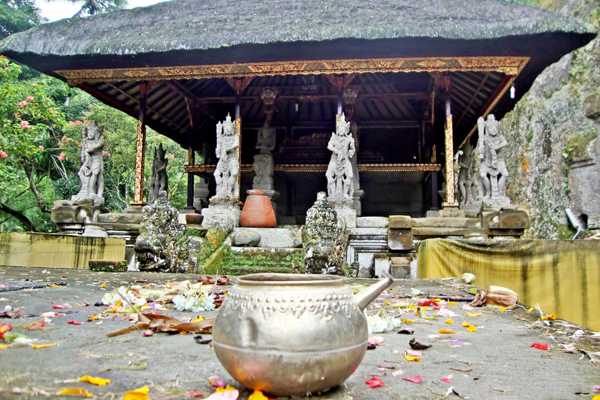The Balinese celebrate the day of Galungan, which commemorates the triumph of Dharma over Adharma, or good over evil. Second in terms of significance after the Nyepi day of silence or Saka New Year, this observance comes twice a Gregorian year, as the Balinese use a 210-day calendar system known as the pawukon which serves as the basis for daily rituals, temple anniversaries and holidays on the island.
Shortly leading up to Galungan, bamboo poles decorated with young coconut leaf decorations line the streets all over Bali. This is a unique welcome to Bali if you happen to be on the island around this time. The scene usually lasts until Kuningan, another associated observance that comes 10 days after Galungan.
Galungan and Kuningan in Bali - one of the highlights of Bali Festivals and Events Calendar (Read all about Bali here)

写真提供 Roland (CC BY-SA 2.0) 修正済
What happens on Galungan and Kuningan?
Traditionally, the Galungan Eve on a Tuesday sees the slaughtering of pigs in preparation for communal feasts, as well as baking traditional rice cakes and erecting the iconic penjor bamboo poles. These intricately decorated poles, naturally curved at the top, are adorned with common harvest items such as rice, fruits, coconuts and coconut leaves. The men of the households erect their ‘artwork’ at each household gate on the eve of Galungan, resulting in an impressive view throughout all village roads.
The celebration peaks on a Wednesday when people put on their finest clothes to visit family and pray at temples. The day of Galungan is important for the Balinese, similar to a new year, when everyone returns to their families and home villages. The following Thursday, called Manis Galungan, like Boxing Day, is a day to visit friends and relatives.
Kuningan, on the other hand, marks the end of the 10-day festival. The ceremony surrounding Kuningan refers to special offerings made of yellow turmeric rice. Yellow is also the colour of the god Wisnu, the protector, and member of the Hindu trinity. The Kuningan celebrations are most significant at Sakenan Temple on Serangan Island, southern Denpasar, which coincidentally celebrates its piodalan temple anniversary peak celebrations on the same day. The occasion features a series of sacred dance performances and rituals, with pilgrims attending from all over the island.

写真提供 Mike (CC BY-SA 2.0) 修正済
The legend behind Galungan
As local legend goes, Galungan commemorates a Balinese victory that involves central figures Indra (the Hindu god of thunder, rain and lightning) and the Balinese king, Mayadenawa, who denied his subjects the worship of Hinduism. So powerful was the king that no one could overcome him. The conquest of Java's Majapahit army back then had little effect. Battles ensued until finally Indra descended from the heavens to defeat the king.
The battle raged in Tampaksiring, Gianyar, where the king was finally subdued. While under siege, he tried to escape through various ways including via supernatural means such as turning into a statue, a stone, and a wild boar. He easily fooled the troops, but not Indra. Mayadenawa then retreated to the jungle leaving behind disguised footsteps, hoping his assailants would not easily track them. Indra's magic arrow put an end to the rebel king.

The legendary site where he bled to death became a freshwater spring, the current-day site of the Tirta Empul Temple. The king’s slanting footprints gave the name to the valley area, later pronounced as Tampak Siring – ‘slanting footprints’. The Balinese and Majapahit armies honoured Indra, commemorating the defeat of the king as Galungan, the day of victory of dharma over adharma. The decorative bamboo poles signify upheld Hinduism and wisdom.
So traumatized were the people that they were not easily convinced of the king’s defeat, believing that he had probably used his magic to turn into a statue, tree or even another animal. To overcome public fear, an official announcement of the defeat was made 10 days later, commemorated as the day of Kuningan, which has 2 meanings, ‘to announce’ and ‘of yellow’.



















